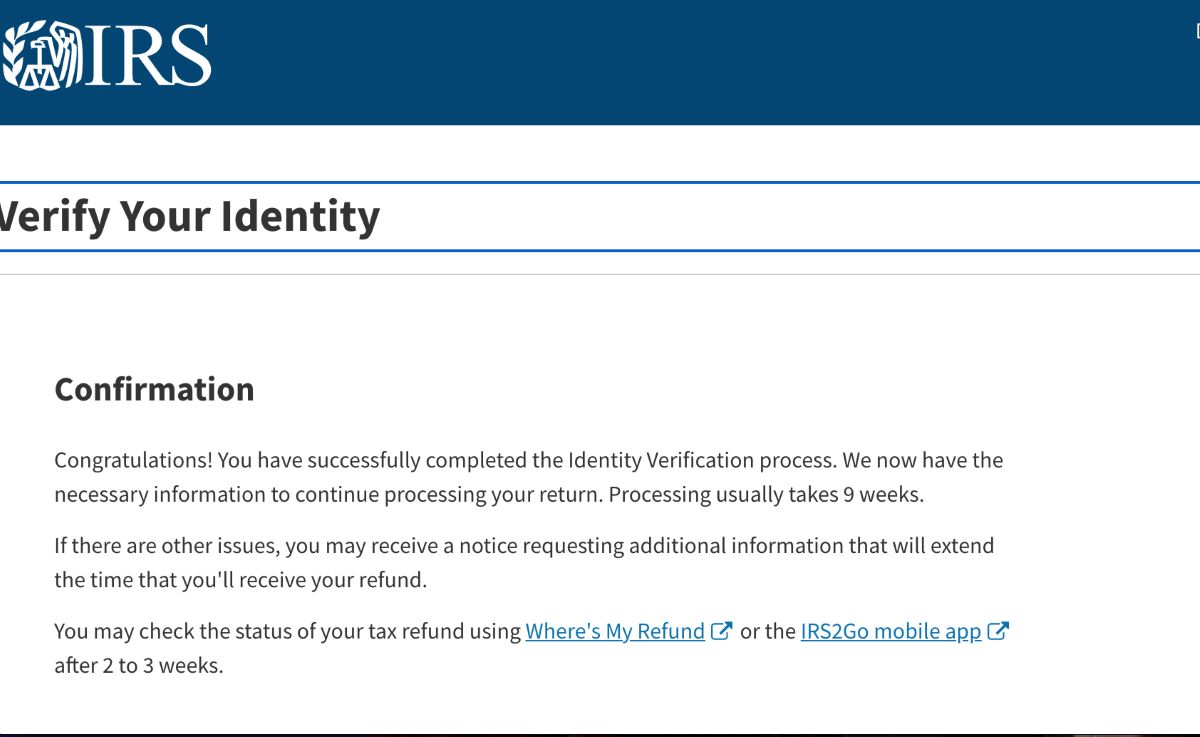

Finance
How Long Do Large Corporate Buyouts Take
Modified: December 30, 2023
Explore the timeline of large corporate buyouts and discover how long they typically take in the world of finance. Gain insights into the duration and intricacies of these significant financial transactions.
(Many of the links in this article redirect to a specific reviewed product. Your purchase of these products through affiliate links helps to generate commission for LiveWell, at no extra cost. Learn more)
Table of Contents
- Introduction:
- Definition of Large Corporate Buyouts:
- Factors Influencing the Duration of Large Corporate Buyouts:
- Due Diligence Process in Large Corporate Buyouts:
- Negotiation and Structuring Phase:
- Financing and Funding Considerations:
- Regulatory and Legal Procedures:
- Closing and Completion of the Buyout:
- Challenges and Risks in Large Corporate Buyouts:
- Case Studies and Examples of Long Buyout Processes:
- Conclusion:
Introduction:
Welcome to the world of large corporate buyouts, where big players in the business arena make strategic moves to acquire control of established companies. These transactions involve significant financial resources, careful planning, and intricate processes. When it comes to large corporate buyouts, one key question often arises: how long does it take?
Large corporate buyouts, also known as mergers and acquisitions (M&A), involve the acquisition of a majority stake or complete control of a company by another entity. These deals can range from multi-million to multi-billion dollar transactions and are often complex in nature.
The duration of a large corporate buyout can vary greatly depending on various factors such as the size and complexity of the target company, the industry it operates in, the regulatory framework, and the negotiation and due diligence process.
In this article, we will explore the factors that influence the duration of large corporate buyouts. We will take a closer look at the due diligence process, negotiation and structuring phase, financing considerations, regulatory and legal procedures, and the closing and completion of the buyout. Along the way, we will also highlight the challenges and risks associated with these transactions and provide real-life case studies and examples to illustrate the varying timelines.
Whether you’re an investor, a business executive, or simply curious about the inner workings of the corporate world, understanding the timeline of large corporate buyouts can provide valuable insights into the complexities and dynamics of these high-stakes transactions.
So, let’s dive in and unravel the world of large corporate buyouts, exploring the factors that influence their duration and gaining a deeper understanding of the processes involved.
Definition of Large Corporate Buyouts:
Before we delve into the intricacies of large corporate buyouts, it is important to establish a clear understanding of what these transactions entail. A large corporate buyout refers to the acquisition of a controlling interest in a company by another entity.
In these transactions, the acquiring entity seeks to gain control over the target company’s operations, assets, and decision-making processes. This control can be achieved by acquiring a majority stake (more than 50%) or, in some cases, full ownership of the target company.
Large corporate buyouts are typically pursued by private equity firms, institutional investors, or even other corporations looking to expand their market presence or diversify their portfolio. These transactions often involve substantial financial outlays and extensive due diligence to assess the target company’s financial health, market position, competitive landscape, and growth prospects.
It is worth noting that large corporate buyouts differ from other types of acquisitions, such as mergers or strategic partnerships. While mergers involve the combining of two or more companies to create a new entity, large corporate buyouts involve the acquiring entity taking control of the target company and absorbing it into its existing operations or portfolio.
The motivations behind large corporate buyouts can vary. Acquiring entities may seek to capitalize on synergies between the two companies, gain access to new markets or technologies, diversify their revenue streams, or simply increase their market share and competitive advantage.
Large corporate buyouts are complex transactions that require meticulous planning, thorough analysis, and the involvement of various stakeholders, including legal and financial advisor teams. These deals are subject to regulatory scrutiny to ensure fair competition and protect the interests of shareholders and other stakeholders.
Now that we have a clearer understanding of what large corporate buyouts entail, let’s explore the factors that can significantly influence the duration of these transactions.
Factors Influencing the Duration of Large Corporate Buyouts:
Several factors come into play and can significantly impact the duration of large corporate buyouts. Understanding these factors can help stakeholders involved in the process better manage expectations and navigate the complexities of the transaction. Here are some key factors that influence the duration:
- Size and Complexity of the Target Company: The size of the target company is an important determinant of the buyout duration. Large companies with multiple subsidiaries, complex operations, and a broad geographical presence tend to require more time for due diligence, analysis, and decision-making. On the other hand, smaller companies with simpler organizational structures might have a shorter acquisition timeline.
- Industry and Market Conditions: The industry in which the target company operates can have a significant impact on the buyout duration. Highly regulated industries, such as healthcare or financial services, often involve additional scrutiny and approval processes that can prolong the duration of the buyout. Similarly, market conditions, such as economic stability or industry trends, can influence the speed at which a transaction progresses.
- Due Diligence Process: Due diligence is a crucial step in the buyout process, during which the acquiring entity thoroughly examines the target company’s financial, legal, operational, and strategic aspects. The complexity of the due diligence process can vary based on the size and nature of the target company. Conducting comprehensive due diligence takes time and resources, especially for larger, more complex organizations.
- Negotiation and Structuring Phase: Once the due diligence process is complete, the negotiation and structuring phase begins. This stage involves negotiating the terms of the acquisition, including the purchase price, financing arrangements, and post-acquisition plans. The duration of this phase can be influenced by the complexity of negotiations, the number of parties involved, and any potential roadblocks or disagreements that arise.
- Financing and Funding Considerations: Securing the necessary financing and funding for the buyout can also impact the timeline. The acquiring entity may need to arrange debt financing, equity investments, or a combination of both. The process of securing financing, conducting financial analysis, and obtaining the necessary approvals can take time.
- Regulatory and Legal Procedures: Large corporate buyouts are subject to a range of regulatory and legal procedures, which can vary by jurisdiction. These procedures may include antitrust reviews, shareholder approvals, regulatory filings, and clearance from relevant authorities. The duration of these procedures can significantly impact the overall timeline of the buyout.
- Closing and Completion of the Buyout: The final stage of the buyout process involves the closing and completion of the transaction, where all necessary paperwork is finalized, funds are transferred, and legal ownership is transferred to the acquiring entity. The duration of this stage can depend on the efficiency of the involved parties in completing the necessary documentation and fulfilling any remaining conditions.
It’s important to note that while these factors can influence the duration of large corporate buyouts, the timeline can vary on a case-by-case basis. Each transaction is unique, and unforeseen circumstances or external events can also impact the duration. However, by understanding these factors and managing them effectively, stakeholders can work towards smoother and more efficient buyout processes.
Due Diligence Process in Large Corporate Buyouts:
The due diligence process is a critical phase in large corporate buyouts, aimed at thoroughly examining and assessing the target company’s financial, operational, legal, and strategic aspects. This process helps the acquiring entity gain a comprehensive understanding of the target company’s value, potential risks, and growth prospects. The due diligence process typically involves the following steps:
- Information Gathering: The acquiring entity requests and gathers relevant information from the target company. This includes financial statements, tax filings, legal agreements, contracts, intellectual property records, organizational structure, employee contracts, operational reports, and any other pertinent documents.
- Financial Analysis: Financial statements, including income statements, balance sheets, and cash flow statements, are carefully analyzed to assess the target company’s financial health, profitability, and potential liabilities. This analysis helps identify any discrepancies, hidden liabilities, or potential concerns that could affect the valuation of the target company.
- Operational Assessment: The acquiring entity evaluates the target company’s operational structure, processes, and efficiency. This assessment includes analyzing key performance indicators, production capabilities, supply chain management, customer relationships, and competitive positioning. The goal is to identify any operational risks, opportunities for improvement, or synergies with the acquiring entity.
- Legal and Regulatory Compliance: The legal team conducts a thorough review of the target company’s legal and regulatory compliance. This includes assessing any ongoing litigation, regulatory violations, intellectual property rights, contracts, and licenses. The objective is to identify any legal or regulatory risks that could impact the buyout or necessitate additional negotiations or adjustments to the deal terms.
- Customer and Market Analysis: The acquiring entity carries out an analysis of the target company’s customer base, market position, competitive landscape, and growth potential. This analysis helps determine the target company’s market value, brand reputation, and customer loyalty. It also aids in assessing the potential for future growth and identifying any market risks or opportunities.
- Strategic Alignment: The acquiring entity evaluates the strategic fit between the target company and its existing operations or portfolio. This assessment includes considering synergies, potential cost savings, expanded market reach, and the overall strategic value of the acquisition. It helps determine the long-term strategic objectives and integration plans for the target company post-acquisition.
The duration of the due diligence process can vary depending on the size, complexity, and availability of information from the target company. The acquiring entity leverages the expertise of legal, financial, and industry-specific professionals to conduct a thorough analysis. This process involves collaboration and coordination between the acquiring entity and the target company, exchanging information and addressing any concerns or inquiries that may arise.
Efficient due diligence is essential to uncovering potential risks, opportunities, and insights that can significantly impact the valuation and success of the buyout. It is crucial for the acquiring entity to allocate sufficient time and resources to conduct a comprehensive due diligence process.
Once the due diligence process is complete and the acquiring entity is satisfied with the findings, the next phase of the buyout process involves negotiations and structuring the deal terms. The insights gained from the due diligence process play a critical role in determining the purchase price, valuation adjustments, and any conditions or contingencies that need to be addressed before finalizing the transaction.
Negotiation and Structuring Phase:
After the due diligence process is completed, the next crucial phase in large corporate buyouts is the negotiation and structuring phase. This stage focuses on reaching mutually agreeable terms and conditions between the acquiring entity and the target company. It involves a series of negotiations, discussions, and legal considerations to finalize the deal. Here are the key aspects of this phase:
- Purchase Price and Valuation: One of the primary elements of negotiation is determining the purchase price and the valuation of the target company. Both parties engage in extensive discussions and analysis to establish a fair and acceptable price. Factors such as the target company’s financial performance, growth prospects, industry trends, and potential synergies with the acquiring entity are taken into account to reach a consensus.
- Deal Structure: The negotiation phase also involves determining the structure of the deal, including the form of consideration to be provided to the shareholders of the target company. This may involve a combination of cash, stock, debt, or a mix of different securities. Structuring the deal also involves deciding on the timing and terms of any earn-out arrangements, where a portion of the purchase price is contingent upon the target company achieving certain financial or operational milestones in the future.
- Terms and Conditions: In addition to the purchase price and deal structure, the negotiation phase encompasses defining the specific terms and conditions of the agreement. This includes the representations and warranties made by both parties, indemnification provisions, non-compete agreements, governance matters, transition assistance for the target company’s management team, and any other provisions necessary to protect the interests of both parties.
- Synergy Assessment: During the negotiation phase, the acquiring entity assesses the potential synergies that can be achieved through the buyout. This involves evaluating how the integration of the target company’s operations, products, or services can complement or enhance the acquiring entity’s existing business. The parties explore cost-saving opportunities, revenue growth prospects, cross-selling opportunities, and other strategic advantages that can be gained from the transaction.
- Legal and Regulatory Compliance: Throughout the negotiation process, legal and regulatory considerations play a critical role. Both parties must ensure compliance with applicable laws, regulations, and industry-specific requirements. Necessary regulatory approvals, such as antitrust clearances or governmental consents, are sought, and any specific legal requirements or conditions are addressed in the negotiation phase.
- Professional Advisors: During this phase, the acquiring entity and the target company enlist the assistance of professional advisors, including legal counsel, financial consultants, and investment bankers, to guide them through the negotiation process. These advisors play a crucial role in providing expert advice, conducting financial analysis, facilitating discussions, and ensuring that the deal is structured in the most advantageous manner for their respective clients.
The negotiation and structuring phase is a dynamic process, requiring open communication and flexibility from both parties involved. It involves multiple rounds of negotiation, counteroffers, and revisions to reach a mutually satisfactory agreement. The duration of this phase can vary depending on the complexity of the deal, the number of parties involved, and any unexpected obstacles or challenges that may arise during the negotiation process.
Once the negotiation and structuring phase is successfully completed, the focus shifts to securing the necessary financing and regulatory approvals, leading to the closing and completion of the buyout. The outcomes of the negotiation phase form the foundation for the final contractual agreements and set the stage for the subsequent stages in the buyout process.
Financing and Funding Considerations:
Once the terms of the buyout have been negotiated and agreed upon, the acquiring entity must determine the financing and funding arrangements to complete the transaction. Large corporate buyouts often involve significant financial resources, and careful consideration must be given to ensure adequate funding. Here are the key factors and considerations in the financing and funding phase:
- Debt Financing: One common approach to financing large corporate buyouts is raising funds through debt financing. This involves securing loans from financial institutions, such as banks or private lenders. The acquiring entity must evaluate its borrowing capacity, creditworthiness, and ability to service the debt in the future. Negotiating the terms of the debt financing, including interest rates, repayment structures, and any associated covenants, is a crucial aspect during this phase.
- Equity Investments: Another method of financing buyouts is through equity investments. The acquiring entity may seek additional equity partners, such as private equity firms or strategic investors, to contribute capital in exchange for an ownership stake. The structure of equity investments, including the percentage of ownership and the rights and privileges granted to the investors, is determined during this phase. The acquiring entity must evaluate the potential dilution of ownership and the impact on control of the merged entity.
- Hybrid Financing: In some cases, large corporate buyouts involve a combination of debt financing and equity investments. This hybrid financing approach can help diversify the sources of funding and optimize the capital structure of the acquiring entity. The mix of debt and equity financing is determined based on the financial objectives, risk tolerance, and overall capital requirements of the transaction.
- Financial Analysis and Projections: During the financing phase, the acquiring entity prepares detailed financial analysis and projections to demonstrate the viability and potential returns of the buyout. This includes assessing the projected cash flows, profitability, debt serviceability, and return on investment. The financial analysis serves as a critical component in securing financing, as lenders and equity investors evaluate the potential risks and rewards of the transaction.
- Syndication of Debt: In certain cases, the acquiring entity may opt to syndicate the debt financing, meaning they seek multiple lenders to jointly provide the necessary funds. This approach helps spread the risk among different financial institutions and diversifies the sources of debt funding. The acquiring entity must coordinate the syndication process, negotiate the terms with each participating lender, and ensure compliance with syndication agreements.
- Regulatory Approvals: The financing and funding phase may also involve securing necessary regulatory approvals, particularly for transactions involving regulated industries or cross-border transactions. Regulatory authorities may require proof of adequate funding, compliance with financial regulations, or a demonstration of the acquiring entity’s financial stability and capacity to meet its obligations.
- Transaction Costs: It is important to consider the transaction costs associated with financing and funding a large corporate buyout. This includes legal fees, advisory fees, due diligence expenses, underwriting fees, and any other costs related to securing the necessary funds and complying with regulatory requirements.
The duration of the financing and funding phase can vary based on the complexity of the transaction, the availability of funding sources, and the requirements of regulatory authorities. Efficiently finalizing the financing arrangements is crucial to ensure a smooth transition to the closing and completion of the buyout.
Once the financing and funding considerations are addressed, the focus shifts to obtaining regulatory approvals, fulfilling any outstanding conditions, and completing the necessary documentation to finalize the buyout. The successful completion of this phase paves the way for the final stages of the transaction, culminating in the closing of the deal and the integration of the target company into the acquiring entity’s operations and portfolio.
Regulatory and Legal Procedures:
Regulatory and legal procedures play a crucial role in large corporate buyouts, ensuring compliance with applicable laws and protecting the interests of shareholders, employees, and other stakeholders. These procedures can vary depending on the jurisdictions involved and the specific industry regulations. Understanding and navigating the regulatory and legal landscape is essential for a successful buyout. Here are the key aspects of the regulatory and legal procedures in large corporate buyouts:
- Antitrust and Competition Laws: In many jurisdictions, large corporate buyouts are subject to antitrust and competition laws to prevent anti-competitive behavior and maintain fair market competition. Acquiring entities must undergo antitrust reviews to assess potential market dominance and potential negative impacts on competition. Regulatory authorities may require divestitures or other remedies to address any anti-competitive concerns.
- Shareholder Approvals: The buyout process typically involves seeking approval from the target company’s shareholders. Depending on the jurisdiction and the size of the transaction, shareholder approval may be required by law or as stipulated in the target company’s bylaws. Shareholder approval ensures that the interests of the target company’s owners are taken into account and provides transparency in the buyout process.
- Regulatory Filings: As part of the regulatory and legal procedures, acquiring entities often need to file various documents and notifications with relevant regulatory authorities. These filings may include merger notifications, change of control notifications, or other required disclosures. Complying with these filing obligations helps ensure transparency, adherence to regulatory requirements, and regulatory oversight throughout the buyout process.
- Foreign Investment Regulations: Cross-border buyouts may involve additional regulatory considerations related to foreign investment. Some jurisdictions have specific regulations governing the acquisition of local companies by foreign entities. Acquiring entities must comply with these regulations, which may include obtaining foreign investment approvals, satisfying national security concerns, or meeting specific criteria for foreign ownership in certain industries.
- Contractual Agreements and Legal Documentation: The regulatory and legal procedures involve preparing and executing a range of contractual agreements and legal documents. These may include purchase agreements, shareholder agreements, employment contracts, non-compete agreements, intellectual property assignments, and other relevant legal instruments. These agreements outline the rights, responsibilities, and obligations of the parties involved, protecting their interests and providing a framework for the post-acquisition period.
- Due Diligence on Legal and Regulatory Compliance: During the due diligence process, the acquiring entity conducts a thorough assessment of the target company’s legal and regulatory compliance. Any potential legal liabilities, ongoing litigation, regulatory violations, or non-compliance are identified and evaluated. It is crucial to uncover and address these issues to minimize potential legal risks and ensure a smooth transition post-acquisition.
- Securities Regulations: In buyouts involving publicly traded companies, securities regulations play a significant role. Acquiring entities must comply with regulations governing takeover offers, insider trading, disclosure requirements, and other securities-related obligations. These regulations aim to protect investors and ensure fair and transparent transactions in the market.
The duration of the regulatory and legal procedures can vary depending on the complexity of the transaction, the specific requirements of each jurisdiction, and any potential challenges or objections that may arise during the regulatory review process. Prudent legal counsel and close coordination with regulatory authorities are vital to ensuring compliance and expediting the necessary approvals.
By meticulously navigating the regulatory and legal procedures, acquiring entities can complete the necessary documentation, secure the required approvals, and move towards the closing and completion of the buyout. Successfully addressing these procedures helps instill confidence among shareholders, employees, and other stakeholders and facilitates a smooth transition into the post-acquisition phase.
Closing and Completion of the Buyout:
The closing and completion of a large corporate buyout is the final phase of the transaction, where all the necessary steps are taken to transfer ownership and finalize the deal. This phase involves various tasks and considerations, with the ultimate goal of seamlessly transitioning the target company into the acquiring entity’s operations or portfolio. Here are the key aspects of the closing and completion phase:
- Finalizing Legal and Financial Documentation: During this phase, all the necessary legal and financial documentation is reviewed, revised if needed, and executed. This includes the final purchase agreement, shareholders’ agreements, employment contracts, non-compete agreements, and any other contractual agreements that were negotiated during the earlier stages. The acquiring entity’s legal team plays a critical role in ensuring that all necessary documentation is in order and enforceable.
- Transfer of Ownership: The closing and completion phase involves the transfer of ownership from the target company’s shareholders to the acquiring entity. This may involve the issuance of new shares, stock transfers, or the payment of cash consideration, depending on the negotiated terms. The required legal and financial procedures for the transfer of ownership are followed to ensure a seamless transition.
- Funding and Payment: During the closing phase, the acquiring entity ensures that all necessary funding is in place to fulfill the financial obligations of the buyout. This includes ensuring that debt financing has been secured, equity investments have been received, and all parties involved receive the agreed-upon consideration. Payments are made to the target company’s shareholders, advisors, and other parties as per the negotiated terms.
- Regulatory Approvals and Clearances: Prior to closing the deal, any required regulatory approvals or clearances must be obtained. This may involve obtaining antitrust clearances, foreign investment approvals, or any other regulatory consents that were identified during the earlier stages of the buyout process. Ensuring compliance with regulatory requirements is essential to avoid any future legal complications or challenges.
- Integration and Transition Planning: After the deal is closed, the focus shifts to integration and transition planning. The acquiring entity works on integrating the target company into its existing operations or portfolio. This may involve aligning corporate cultures, combining resources, integrating systems and processes, and addressing any post-acquisition challenges. Strategic plans for the future growth and development of the combined entity are also formulated during this phase.
- Communication and Stakeholder Management: Clear and effective communication with stakeholders is crucial during the closing and completion phase. The acquiring entity must ensure that shareholders, employees, customers, and other relevant parties are informed of the successful completion of the buyout and the plans for the future. Managing expectations, addressing concerns, and maintaining transparency contribute to a smooth transition and build trust among stakeholders.
- Post-Acquisition Evaluation and Monitoring: Following the completion of the buyout, the acquiring entity undertakes a process of evaluating the success and performance of the acquisition. This involves monitoring the financial and operational results of the target company, assessing the achievement of synergies, and making any necessary adjustments to ensure the integration is on track. Constant evaluation and monitoring help optimize the benefits and value created from the buyout.
The duration of the closing and completion phase varies depending on the complexity of the transaction, the number of parties involved, and the requirements set forth in the negotiated agreements. Efficient coordination among legal teams, financial institutions, regulatory authorities, and the acquiring and target companies is crucial to successfully complete the buyout.
Once the closing and completion phase is finalized, the buyout is complete, and the acquiring entity assumes control of the target company. The integration of the target company into the acquiring entity’s operations or portfolio begins, and the long-term objectives and growth plans for the combined entity are set in motion.
Challenges and Risks in Large Corporate Buyouts:
Large corporate buyouts are complex transactions that come with their fair share of challenges and risks. These challenges can arise at various stages of the buyout process and pose potential threats to the success of the transaction. Understanding and proactively addressing these challenges is crucial for all stakeholders involved. Here are some common challenges and risks in large corporate buyouts:
- Integration Challenges: Integrating the target company’s operations, systems, cultures, and employees into the acquiring entity can be a significant challenge. Misalignment of strategies, differences in corporate cultures, and overlapping roles and responsibilities can hinder the integration process. Effective communication, clear integration plans, and strong leadership are essential to minimize disruptions and ensure a smooth transition.
- Financial and Operational Risks: Large corporate buyouts often involve assuming substantial financial liabilities and operational risks. These risks can include unexpected financial burdens, unforeseen legal or regulatory issues, or declining market conditions. Conducting thorough due diligence, identifying potential risks early on, and developing contingency plans are vital to mitigating these risks.
- Economic and Market Volatility: Economic downturns or major market fluctuations can significantly impact the success of a buyout. A sudden decrease in market demand, unfavorable economic conditions, or industry-specific challenges can affect the financial performance and growth prospects of the target company. Assessing market conditions and ensuring financial flexibility are important to adapt to changing circumstances.
- Regulatory and Legal Compliance: The regulatory landscape can present challenges and risks in large corporate buyouts. Ensuring compliance with antitrust laws, obtaining necessary regulatory approvals, and addressing any legal or regulatory disputes can be complex and time-consuming. Failure to comply with regulatory requirements can lead to delays, penalties, or even the cancellation of the buyout.
- Shareholder Resistance: The target company’s shareholders may resist or question the buyout, leading to opposition or legal challenges. Shareholders may have concerns about the valuation of their shares, potential conflicts of interest, or the future prospects of the combined entity. Effective communication, transparency, and addressing shareholder concerns can help mitigate resistance and garner support for the buyout.
- Employee Retention and Morale: Large corporate buyouts often raise apprehensions among the target company’s employees regarding job security, changes in employment terms, or potential redundancies. Employee morale and productivity can be negatively affected during the transition period. Implementing clear communication, transparency, and fair treatment of employees are key considerations to mitigate these risks.
- Financing and Funding Constraints: Securing adequate funding for the buyout can be a challenge, especially during economic downturns or in highly competitive financing environments. Difficulty in obtaining debt financing, limited available equity investments, or unfavorable financing terms can impact the feasibility of the transaction. Thorough financial analysis, contingency planning, and flexibility in funding arrangements can help navigate these challenges.
- Uncertain Synergies and Integration Benefits: The anticipated synergies and integration benefits of a buyout may not always materialize as expected. Challenges in combining operations, realizing cost savings, or capturing market share can weaken the business case for the buyout. Conducting thorough due diligence, realistic assessment of synergies, and proactive post-acquisition monitoring are essential to manage these risks.
Managing these challenges and risks requires a well-defined strategy, effective communication, and collaboration among all parties involved. Engaging experienced professionals, conducting comprehensive due diligence, and staying agile in response to unforeseen circumstances are critical to navigating the complexities of large corporate buyouts and ensuring a successful outcome.
Case Studies and Examples of Long Buyout Processes:
Large corporate buyouts can sometimes be complex and lengthy, with the duration of the process varying based on several factors. Let’s explore a few case studies and examples of buyout processes that have taken an extended period:
- Acquisition of Dell Inc.: In 2013, Dell Inc., a renowned computer technology company, announced its intention to go private through a leveraged buyout led by its founder, Michael Dell, in partnership with a private equity firm, Silver Lake Partners. The transaction faced various challenges, including opposition from activist investors and regulatory scrutiny. After several months of negotiations, the buyout process was completed in October 2013, taking approximately one year from its announcement to the final closing.
- Microsoft’s Acquisition of LinkedIn: In 2016, Microsoft announced its plan to acquire the professional networking platform LinkedIn in a deal valued at $26.2 billion. This buyout faced extensive regulatory reviews in multiple jurisdictions, including antitrust inquiries. The regulatory scrutiny and complex nature of the transaction resulted in a buyout process that took around six months before receiving the necessary regulatory approvals and closing the deal in December 2016.
- AT&T’s Acquisition of Time Warner: In 2016, AT&T, a telecommunications giant, announced its proposed acquisition of Time Warner, a prominent media and entertainment company, for $85.4 billion. The deal encountered significant regulatory challenges due to concerns over potential anti-competitive behavior. After a lengthy legal battle and regulatory review process, the acquisition was completed in June 2018, nearly two years after its initial announcement.
- Merck’s Acquisition of Schering-Plough: In 2009, Merck, a multinational pharmaceutical company, completed its acquisition of Schering-Plough, a global pharmaceutical and healthcare company, in a deal valued at approximately $41.1 billion. The buyout process involved extensive due diligence, regulatory approvals, and negotiations. From the initial announcement to the closing of the deal, the process took approximately nine months.
- The Chrysler Acquisition: The acquisition of Chrysler, the American automobile manufacturer, has been marked by long and complex buyout processes. In 1998, Chrysler merged with German automaker Daimler-Benz to form DaimlerChrysler in a cross-border transaction. However, differing corporate cultures and performance issues led to the eventual sale of Chrysler to private equity firm Cerberus Capital Management in 2007. In 2009, Chrysler filed for bankruptcy and subsequently formed an alliance with Italian automaker Fiat. The entire process took several years with various legal, financial, and regulatory hurdles.
These case studies illustrate that large corporate buyouts can face significant challenges and undergo lengthy processes due to factors such as regulatory scrutiny, complex negotiations, shareholder opposition, and legal considerations. It is important to note that the duration of buyout processes can vary widely depending on the specific circumstances of each transaction.
Encountering delays and hurdles during the buyout process is not uncommon, and it is essential for all parties involved to remain persistent, proactive, and adaptable to navigate the complexities and ensure a successful outcome.
Conclusion:
Large corporate buyouts are complex transactions that require careful planning, extensive due diligence, and adherence to regulatory and legal procedures. The duration of these buyouts can vary significantly depending on various factors such as the size and complexity of the target company, industry regulations, negotiation and structuring efforts, financing arrangements, and regulatory approvals.
Throughout the buyout process, stakeholders must be prepared to overcome challenges and mitigate risks that arise. These challenges can include integration issues, financial and operational risks, regulatory hurdles, shareholder resistance, and economic uncertainties. By addressing these challenges proactively and implementing effective strategies, stakeholders can increase the likelihood of a successful buyout.
Case studies of prominent buyouts, such as Dell Inc., Microsoft’s acquisition of LinkedIn, AT&T’s acquisition of Time Warner, Merck’s acquisition of Schering-Plough, and the Chrysler acquisition, demonstrate that large buyout processes can be time-consuming and complex due to a variety of factors. These examples highlight the importance of navigating regulatory procedures, securing necessary financing, managing stakeholder expectations, and conducting comprehensive due diligence.
In conclusion, large corporate buyouts require meticulous planning, thorough analysis, and diligent execution. By understanding the factors that influence buyout duration, engaging with experienced professionals, and proactively addressing challenges and risks, stakeholders can navigate the complexities of the buyout process and increase the likelihood of a successful and value-enhancing transaction.
As the business landscape continues to evolve, large corporate buyouts will remain a prominent feature of the financial world. By staying informed and adapting to changing market conditions and regulatory environments, stakeholders can leverage these transactions to drive growth, achieve strategic objectives, and create value for their organizations.














